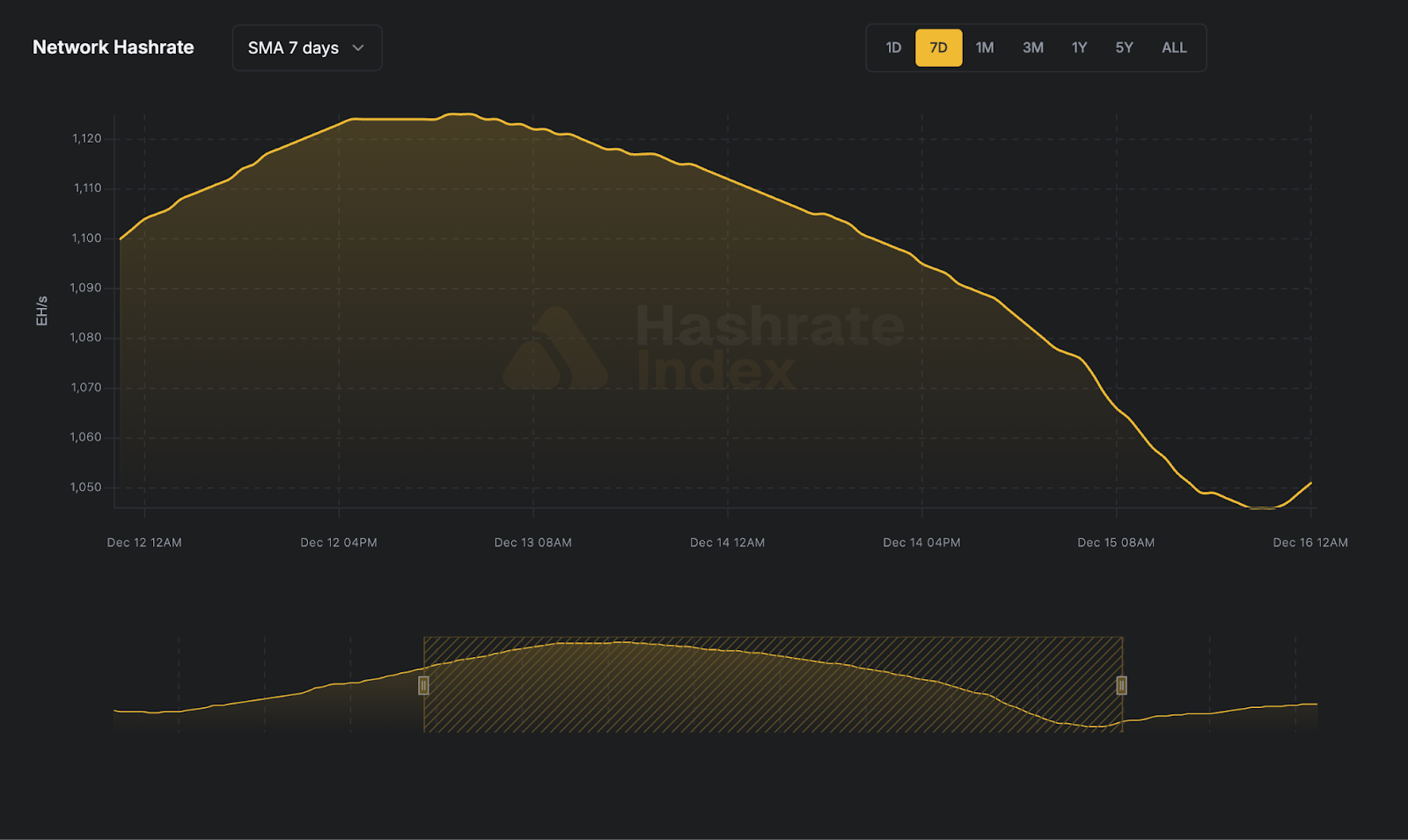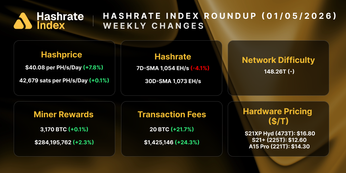
Energy Markets for Bitcoin Miners: Colocation and Off-grid Mining
How miners turn stranded energy into a competitive edge, and why structure makes the difference.
Luxor’s Energy Markets for Bitcoin Miners series explores how miners engage with power markets to optimize profitability and manage risk.
Introduction
In the first post of this series, we explored how Bitcoin miners manage market exposure through spot and fixed-price power contracts. These profiles offer different trade-offs: spot provides flexibility, while fixed-price power introduces cost certainty and the potential to monetize volatility through grid resale.
In the second post, we dug into a more advanced strategy: fixed-price power contracts overlaid with financial instruments, specifically short call options on power and fixed Bitcoin mining pool payouts. Together, these tools allow miners to lock-in operating margins and grow.
In the third post, we examined how miners are producing value beyond bitcoin by tapping into ancillary services.
This final instalment examines colocation and off-grid mining models: how they work, the economics behind them, and how hybrid structures can blend the benefits of independence with the optionality of grid access.
Introduction
Miners engage with wholesale power markets in many ways — from spot vs. fixed pricing to the hashspark spread and ancillary service participation. But not all miners are exposed to grid market dynamics. Many operate on the fringes (or entirely outside) of organized wholesale markets, sourcing power directly from a specific generator or producing it themselves.
Off-Grid and “As Gen” Colocation
Not all miners draw from the broader power grid. Many operate directly alongside a generator — whether a wind farm, solar facility, natural gas unit, or flare gas system. These setups are often referred to as “As Gen,” “Behind the Meter,” “Unit Contingent,” or simply “Off-Grid.” The structure is consistent: the datacenter is either physically colocated with (or contractually tied to) an energy source, with no connection to wholesale power markets.
Under these arrangements, a miner’s consumption is dictated by the generator’s physical output, not by external price signals. If a wind farm is producing 10MW at a given moment, the miner can only consume 10MW — even if its contracted allocation is 20MW. Any unused energy is effectively lost, since there is no ability to sell it back into the grid. The same principle applies across off-grid deployments: whether using natural gas, stranded renewables, or flare gas, miners are bound by resource availability rather than market dynamics.
This creates a fundamentally different operational profile. Unlike grid-tied miners who throttle based on real-time spot pricing, off-grid or “As Gen” sites operate on availability, not price. Even if spot power prices soar above breakeven levels, the miner continues consuming because the power cannot be monetized elsewhere. Profitability becomes decoupled from the broader energy market, and is instead shaped by the uptime, variability, and fixed costs of the underlying generator (or energy contract).
These setups often deliver lower all-in power costs, particularly when tapping into constrained or commercially stranded energy. But they tend to trade that discount for reduced flexibility and lower uptime, especially when tied to intermittent resources like wind or solar. The economic model is less about maximizing hours online, and more about optimizing margin during operations when power is available. In effect, the resource itself shields operations from external market volatility, but exposes them to the inherent risks of local supply.
Off-grid mining projects can take many structural forms: flat natural gas pricing, profit-sharing agreements with producers, joint ventures, or fully private deployments. They are typically smaller in scale and more remote, with lower variable costs but often higher upfront capital requirements, especially when infrastructure must be built from scratch. Still, they can be much faster to deploy and more nimble versus grid-tied operations, since they often bypass regulatory interconnection requirements and can be tailored to resource and site-specific conditions.
In practice, off-grid and “As Gen” mining is best suited for environments where power is abundant but stranded, uptime may be variable, and operators are focused on cost control and margin optimization rather than sheer utilization. When deployed in the right context, these strategies offer a compelling mix of low-cost energy, operational independence, and insulation from grid dynamics.
Hybrid Strategies
Grid Backfill
A variation on pure colocation is the Grid Backfill model. Here, a miner draws its base load from a dedicated generator, but supplements with grid power when the generator’s output isn’t sufficient to run at full capacity.
The base tranche — tied to the generator — runs regardless of market prices. The backfill portion behaves like a spot market load, scaling up during low-price hours and curtailing when prices exceed breakeven.
Economically, this structure blends:
- A stable foundation of low-cost, contractually committed power.
- Price-responsive flexibility on the incremental load.
This can improve uptime compared to pure off-grid setups while retaining some protection from market volatility. It’s especially useful when the generator is intermittent or undersized relative to the datacenter.
External Gas Markets
For gas-powered miners with a pipeline connection, the economics often parallel grid spot vs. fixed pricing. If fuel is bought at market rates, power costs fluctuate like spot electricity. If fuel is locked in at a fixed rate, costs mirror a fixed-price power contract (PPA) and the miner has the option of selling the gas back to the market. In both cases, the miner curtails when spot gas prices exceed breakeven hashprice.
In both hybrid strategies, the key driver is no longer wholesale electricity pricing — it’s the fuel input cost structure.
Conclusion
Colocation and off-grid strategies let miners sidestep the volatility (but miss out on the opportunities) of wholesale power markets. They can unlock low-cost power from stranded or under-utilized generation, provide a built-in hedge against market price spikes, and offer flexibility in deal structure.
But these advantages come with trade-offs: uptime depends on the generator, responsiveness to market signals is limited, and capital costs can be higher.
For some operators — especially those with access to cheap, constrained energy and a willingness to tailor operations to resource availability — colocation and off-grid can be the most competitive way to mine. For others, hybrid models like grid backfill can capture much of the cost advantage while preserving flexibility.
In short: whether you’re plugged into the grid or tethered to a single generator, the key to mining profitability is matching your energy profile to your financial and operational strategy.
Disclaimer
This content is for informational purposes only, you should not construe any such information or other material as legal, investment, financial, or other advice. Nothing contained in our content constitutes a solicitation, recommendation, endorsement, or offer by Luxor or any of Luxor’s employees to buy or sell any derivatives or other financial instruments in this or in any other jurisdiction in which such solicitation or offer would be unlawful under the derivatives laws of such jurisdiction.
There are risks associated with trading derivatives. Trading in derivatives involves risk of loss, loss of principal is possible.
Hashrate Index Newsletter
Join the newsletter to receive the latest updates in your inbox.









